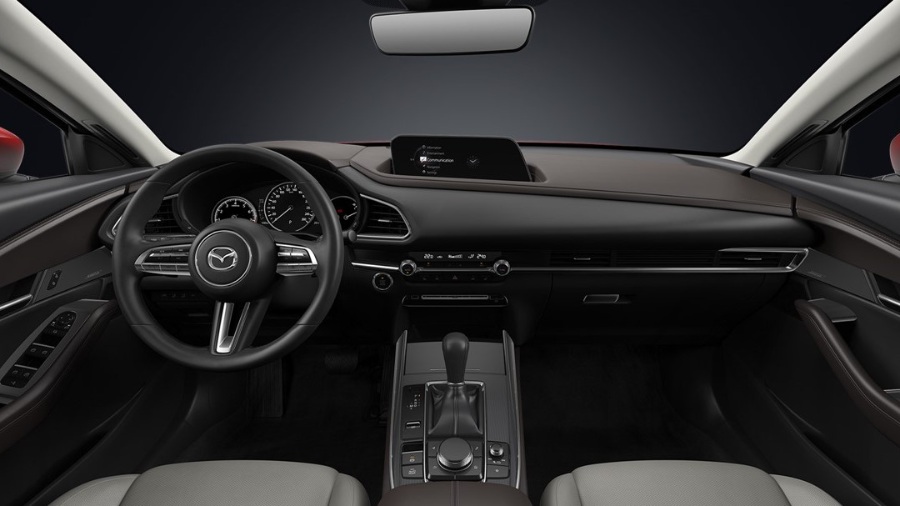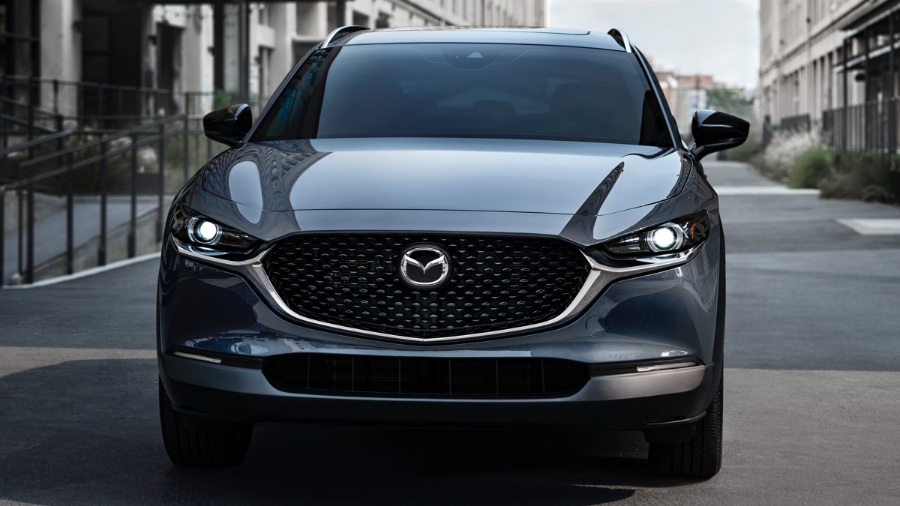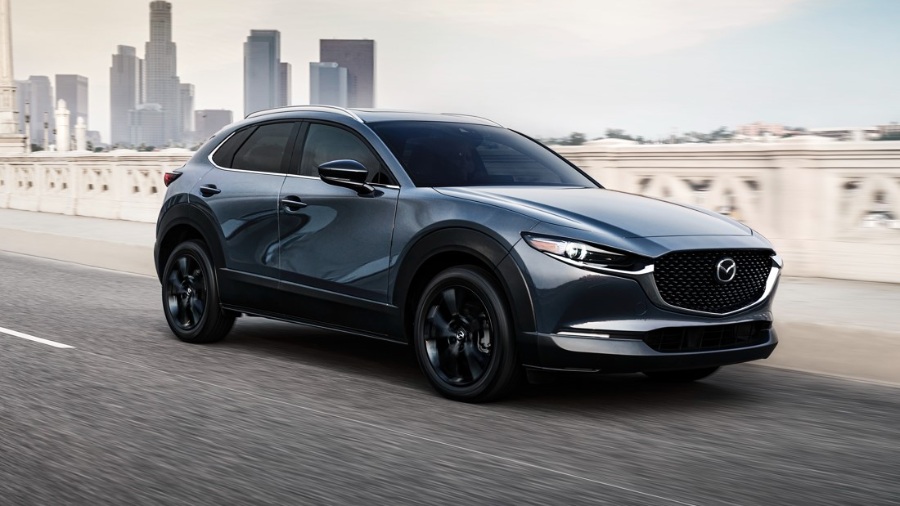Table of Contents
- Mazda CX-30 2021 Review and Prices in KSA
- Mazda CX-30 Exterior
- Mazda CX-30 Interior
- Mazda CX-30 Technology and Infotainment
- Mazda CX-30 Engine Specifications
- Mazda CX-30 Safety and Driver Assistance
- Why should you buy a Mazda CX-30?
- Mazda CX-30 2021 Prices
- Mazda CX-30 2020 vs Mazda CX-30 2021
- Mazda CX-30 Comparison in Trims and Models
- Mazda CX-30 Pros and Cons
Mazda CX-30 2021 Review and Prices in KSA
Mazda CX-30 is a compact crossover based on the fourth generation of the Mazda 3 which the company unveiled at the 2019 Geneva Motor Show.
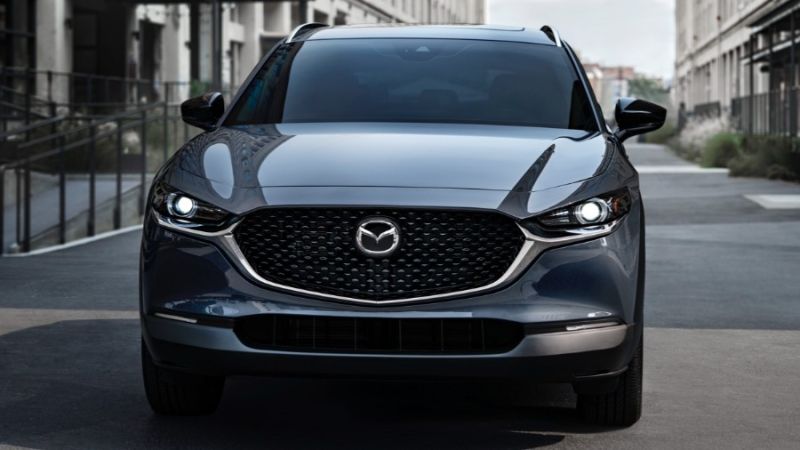
Mazda CX-30 Exterior
The modern design language is manifested in the prominent dynamic body lines of the Mazda CX30 exterior. The front fascia is topped with a massive grille painted in chrome. The headlights have a bold design and LED technology and hidden front wipers with a water tank. From the side, we notice electric side mirrors with auto-dimming and memory, an electric sunroof, as well as 18-inch aluminum wheels with bulging arches. The taillights use LED technology, and the tailgate is electric.
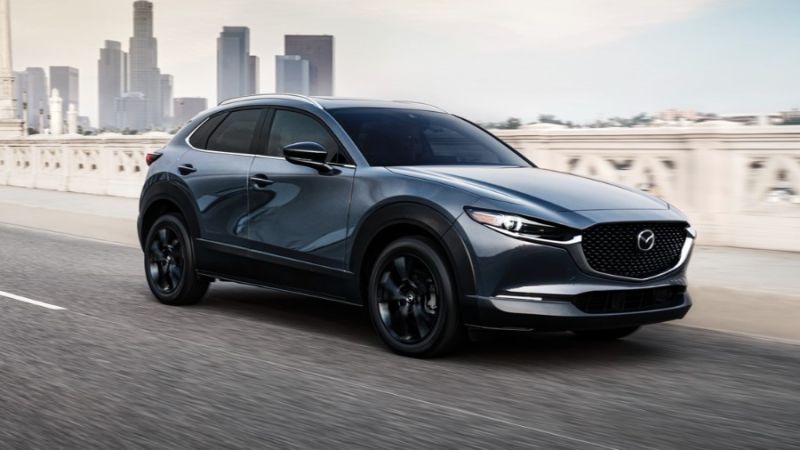
Mazda CX-30 Interior
When we access the cabin, we notice the elegant design features in chrome accents, leather seats that can seat up to 5 people with ample space, and a rear seat with cup holders, as well as a leather steering wheel with multifunction buttons, self-dimming rear mirrors, and available LED interior lighting.
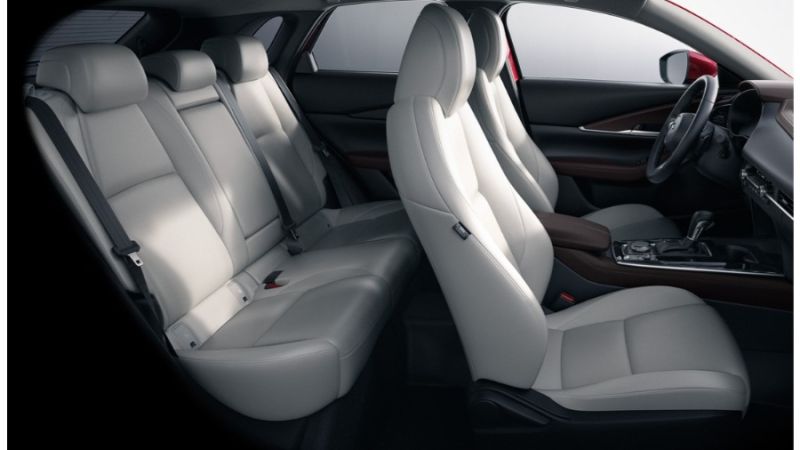
Mazda CX-30 Technology and Infotainment
The infotainment system is centered around an 8.8-inch diagonal screen that is operated by MZD Connect, as well as voice commands, Bose audio system with 12 speakers, radio, Bluetooth, Apple CarPlay, USB port, CD player, smart entry system, and automatic air conditioning.
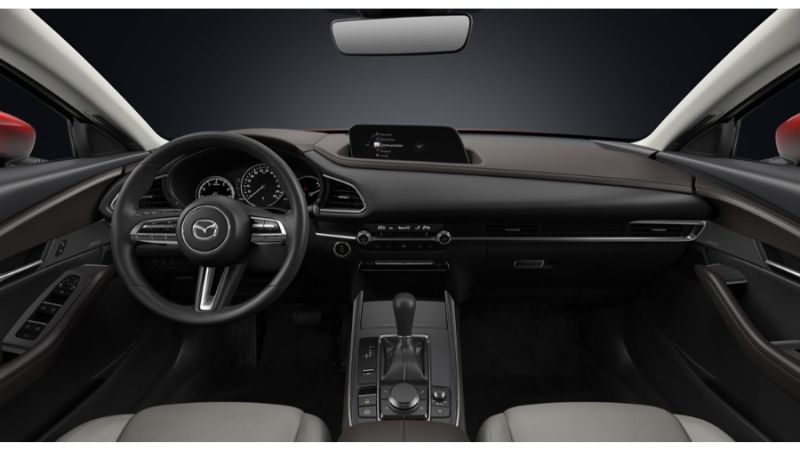
Mazda CX-30 Engine Specifications
The CX30 is powered by a 2.0-liter 4-cylinder engine that generates 155 horsepower at 6000 rpm and a torque of 200 Nm at 4000 rpm, connected to a 6-speed automatic transmission, directed to a front-wheel drive system.
Mazda CX-30 Safety and Driver Assistance
- 7 front, side, curtain and driver's knee airbags
- Shock reducing front seats
- Shock absorbing steering system
- Adaptive front lighting with controllability
- Blind Spot Monitoring System
- Rear traffic control
- 360 degree view
- Rear parking sensors
- Driver Alert System
- Radar cruise control with stop-and-go function
- Lane keeping assist
- Lane departure alert
- Smart brake support
- Day and night cross traffic alert
- Hill Start Assist
- Anti-Gravity Stability Enhancement System
- Dynamic Stability Control
- Traction control
- Tire pressure monitoring system
Why should you buy a Mazda CX-30?
Mazda CX-30 displays high-quality craftsmanship and luxurious materials, as well as advanced safety systems, ensuring an enjoyable driving experience with the all-wheel-drive version, a comfortable ride thanks to an advanced electronic stability system, and a large luggage space with the ability to fold the seats.
Mazda CX-30 2021 Prices
The standard CX-30 starting price is $24,000. Its expense is estimated annually at about $360, according to the rate and nature of use.
Mazda CX-30 2020 vs Mazda CX-30 2021
Except for the availability of a 250-horsepower turbo engine, the Mazda CX-30 2021 received no new updates over the 2020 model.
Mazda CX-30 Comparison in Trims and Models
There isn't much difference between the two Mazda CX30 variants, and the majority of it is concentrated in the interior, where the seats are covered in leather rather than fabric and have a heating feature, and the head up display is available on the higher trim.
Also, the standard 8-speaker sound system rather than the Bose system with 12 speakers is offered in the higher trim. A navigation system and a 360-degree camera instead of the rear camera, as well as a collision warning system and front-to-rear parking sensors are also featured on the higher variant.
Mazda CX-30 Pros and Cons
Pros of Mazda CX-30 2021 include its luxurious interior and advanced safety systems that ensure a pleasurable ride and drive. Cons of Mazda CX-20 2021 include its slow transmission, numerous blind spots in the rear, and a relatively high fuel consumption rate.




